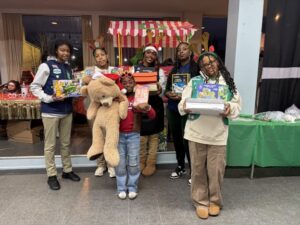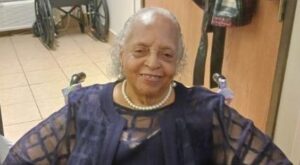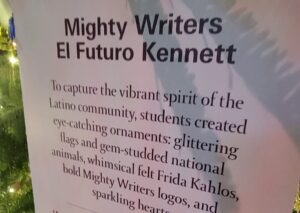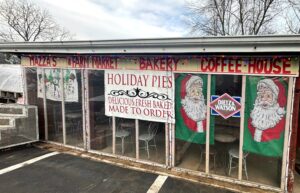Through Their Eyes: Youth Photography Project Brings Lawnside’s Underground Railroad History into Focus
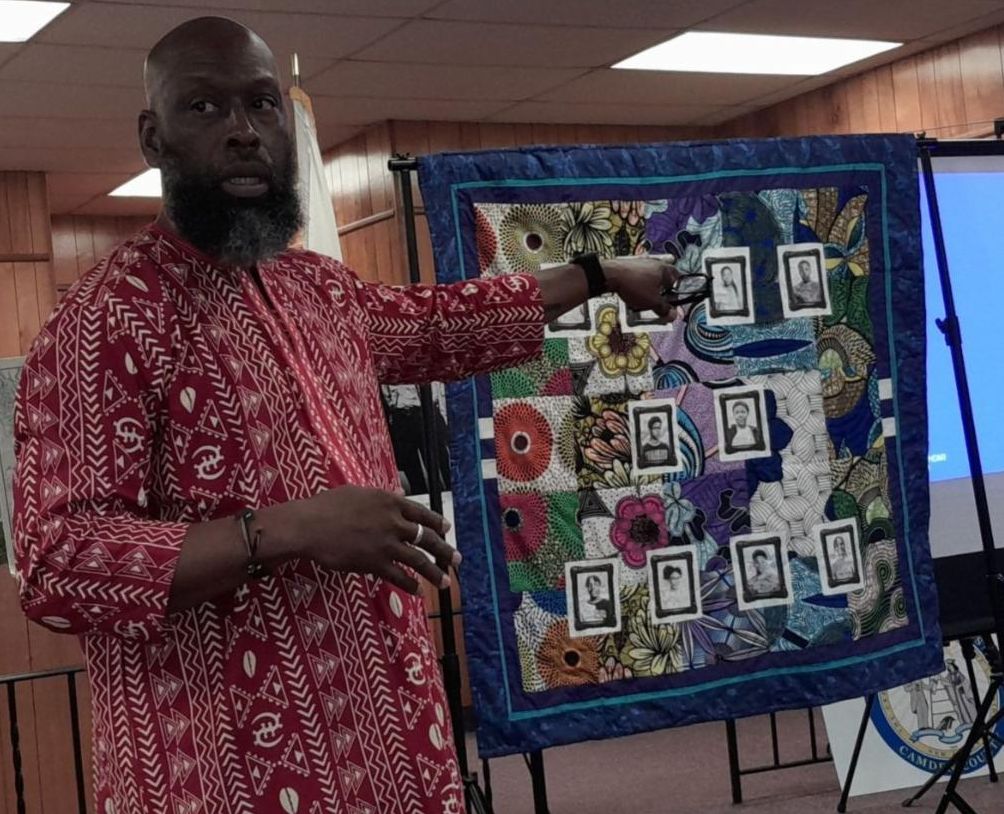
Photo courtesy of Lawnside Historical Society.
BY MADISON JOLLEY | For AC JosepH Media
LAWNSIDE — In the borough of Lawnside, where every street and structure hold history, a group of middle school students spent their summer viewing their hometown from a new perspective.
As part of the Lawnside Historical Society’s Underground Railroad Youth Photography Camp, students combined visual storytelling with lessons on identity, heritage, and freedom.
This year marked the fourth time the Historical Society hosted the camp. For the second year in a row, the program featured a creative arts component. This time, students learned photography, using it as a tool to explore Black history and their own sense of place.
“This is something we had talked about for years,” said Linda Shockley, president of the Historical Society. “We wanted to bring young people to the Peter Mott House and help them understand the significance of the Underground Railroad, but also give them a way to connect personally with that history.”
The inspiration for the photography project came from Renee McKenzie, a Historical Society member who had previously led photography workshops at her church in North Philadelphia. When the Society received grant support from the Camden County Cultural and Heritage Commission and the New Jersey Historical Commission, it invited local photographer Erik James Montgomery to lead the photography instruction.
Montgomery, whose nonprofit and studio are based in Camden, taught students how to use professional digital cameras. These were not phone cameras or simple point-and-shoots.
They were DSLR cameras, and the students were trained to use them to capture significant places such as the Peter Mott House, Macedonia AME Church, Mount Peace Cemetery, and the Veterans Memorial.
“These weren’t just snapshots,” Shockley said. “These were reflections of what they saw and how they felt. They captured everything from historical landmarks to everyday moments that helped them think about freedom and resilience.”
The camp was a blend of art and education. Longtime instructors E. Muneerah Higgs and Jacqueline Miller–Bentley continued teaching history through classroom-style lessons, while Montgomery introduced the students to the cultural and social impact of photography in Black communities.
They explored themes like representation, identity, and the power of visual storytelling. Community support made the program possible.
While the initial plan was to charge families a small fee of $25 for the week, donations from organizations like the Southern New Jersey branch of the National Association of University Women, and the Lawnside Education Association helped cover the full cost. Individual donors also stepped in, allowing all ten participants to attend for free.
The camp was held at Grace Temple Baptist Church, providing students with air-conditioned classroom space and access to projectors and screens. Previous years took place on the lawn of the Peter Mott House under tents, which made activities vulnerable to rain and summer heat.
The new setting gave students a more comfortable and focused learning environment, with regular visits to the historic sites for hands-on experience.
One of the most powerful moments of the camp came during a discussion about the “doll test,” a
famous psychological study used in the Brown v. Board of Education case. Shockley recalled how one student shared that her four-year-old sister had recently taken a similar test at school and chose the Black doll as the pretty, smart, and kind doll.
For Shockley, that moment was a powerful example of what the camp hoped to nurture — self-affirmation and pride.
The students also responded deeply to the physical spaces they explored. They reflected on stained-glass windows, the glow of light in the churches, and the symbolism of freedom. At the closing ceremony, they shared what brought them joy.
For one student, it was the ability to express their beliefs. For another, it was the courage of those who had come before them. Their comments were heartfelt and thoughtful, and they revealed a deep understanding of the connection between past and present.
Shockley hopes the program sparks lasting curiosity. Whether students go on to become artists, writers, animators, or engineers, she wants them to know that their voices and stories matter.
One lesson they explored was the power of names. Through an exercise called “Your Name Is a Song,” led by Hicks, students learned to pronounce their names proudly and teach others to say them correctly. They also discussed the importance of respecting the names of others and challenging cultural habits that disregard or diminish those identities.
“Our history is essential,” Shockley said. “It cannot be erased, and it should not be suppressed. These young people should feel proud of who they are and where they come from.”
The Lawnside Historical Society continues to find creative ways to pass on the town’s legacy. Through programs like the youth photography camp, it is helping the next generation not only learn their history, but document and define it for themselves.
Follow Us Today On:
Note from AC JosepH Media: If you like this story and others posted on Front Runner New Jersey.com, lend us a hand so we can keep producing articles like these for New Jersey and the world to see. Click on SUPPORT FRNJ and make a contribution that will go directly in making more stories like this available. Thank you for reading!

